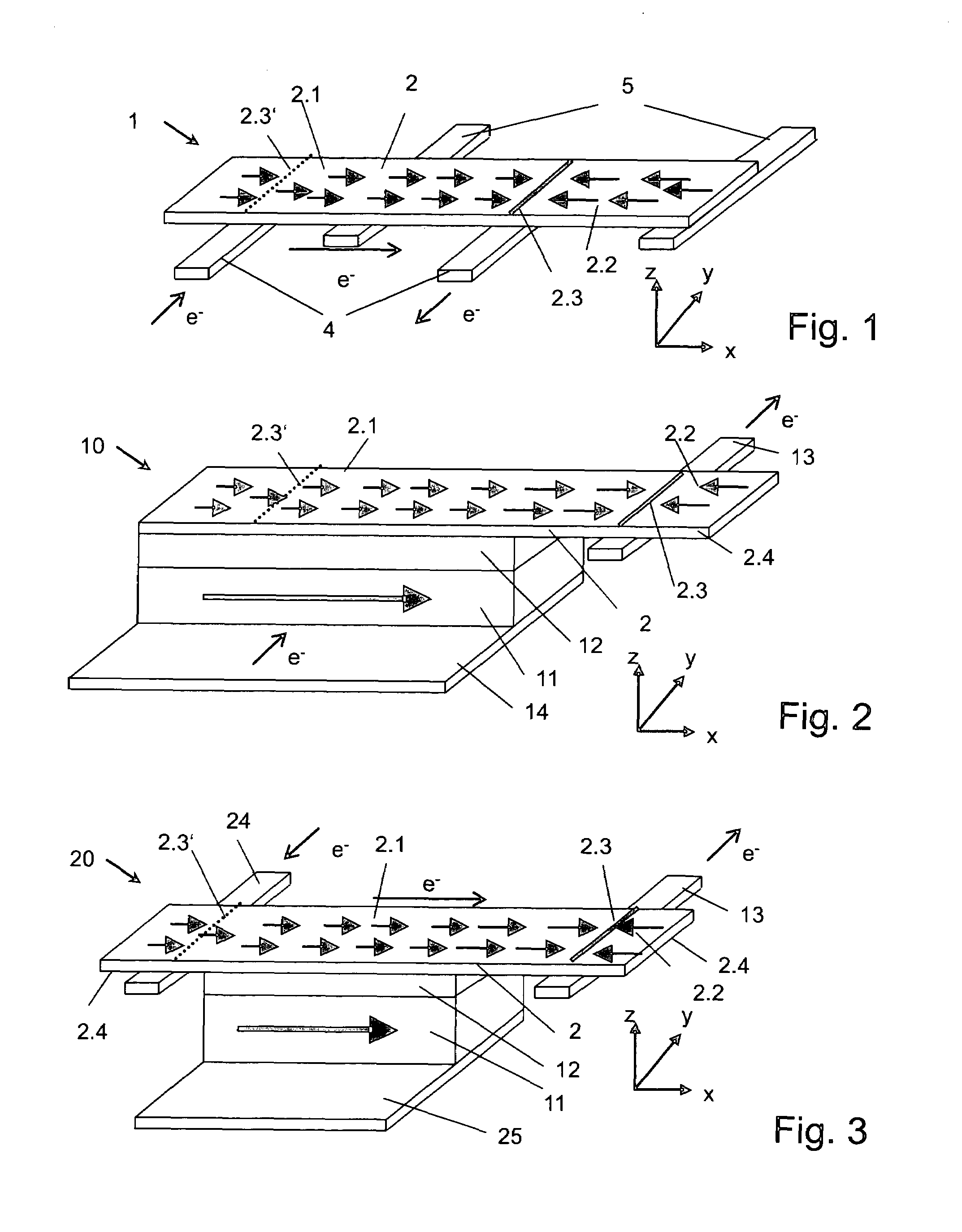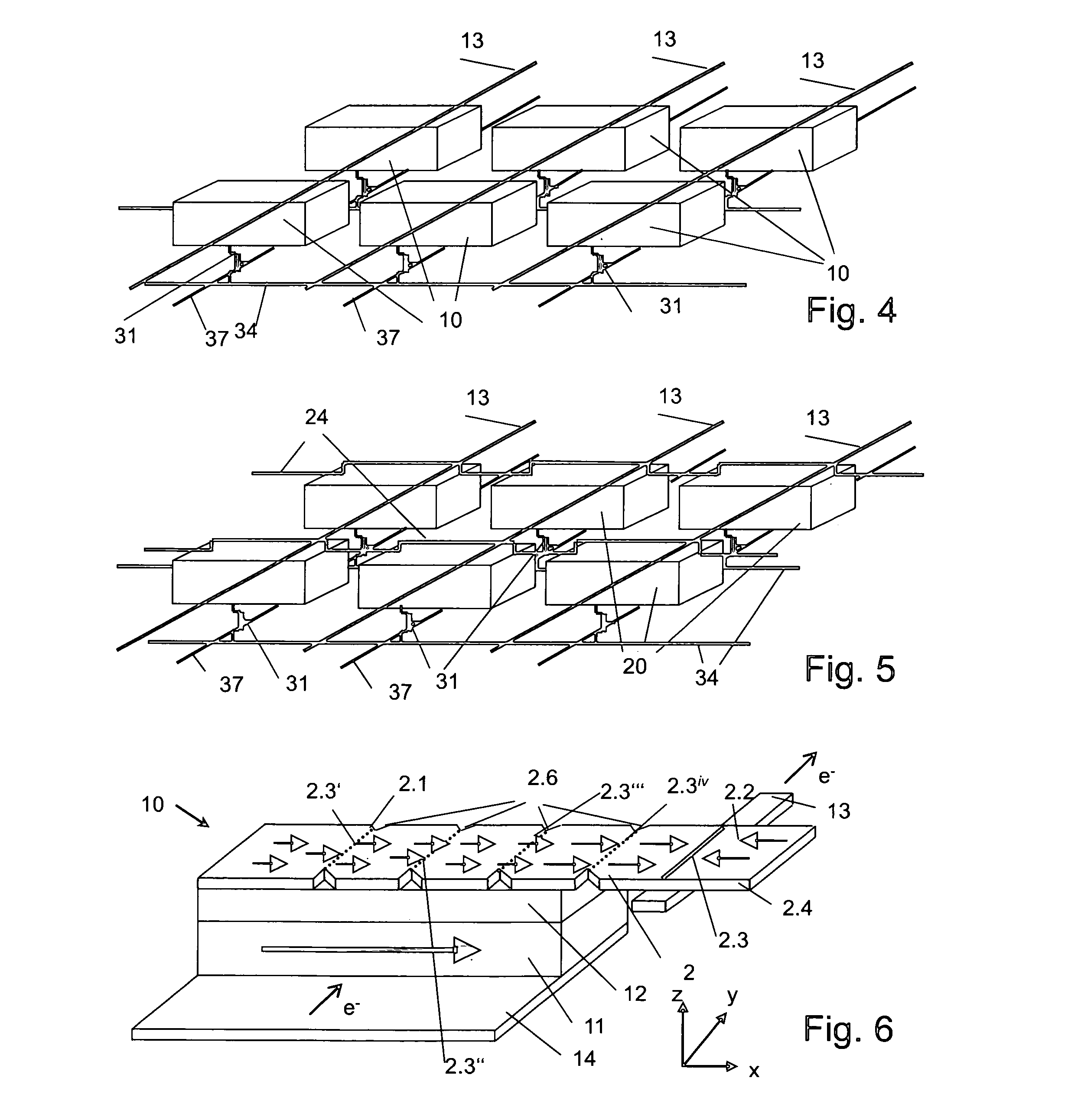Switchable element
a technology of switchable elements and elements, applied in the field of switchable elements, can solve the problems of reducing the maximum speed of the device, compromising the ultimate integration density, and increasing the complexity of the system, and achieve the effect of fast switching or writing processes
- Summary
- Abstract
- Description
- Claims
- Application Information
AI Technical Summary
Benefits of technology
Problems solved by technology
Method used
Image
Examples
Embodiment Construction
[0020]The present invention provides a switchable element, such as a memory element, logic element or sensor element with a magnetic component overcoming drawbacks of prior art memory elements, logic elements or sensor elements. The element has the advantage of being especially suited for fast switching or writing processes and for miniaturisation. The switching process is desired to exhibit a larger operating window for the switching fields. Preferably, a minimum number of leads should suffice for switching, writing and readout processes.
[0021]According to an example embodiment of the present invention, a switchable element, for example a memory element, logic element or sensor element is provided, which comprises a switchable first magnetic component exhibiting a ferromagnetic or ferrimagnetic behaviour, and comprising at least two magnetic domains with different magnetisation directions and a domain wall between the magnetic domains. The first magnetic component may be part of a ...
PUM
 Login to View More
Login to View More Abstract
Description
Claims
Application Information
 Login to View More
Login to View More - R&D
- Intellectual Property
- Life Sciences
- Materials
- Tech Scout
- Unparalleled Data Quality
- Higher Quality Content
- 60% Fewer Hallucinations
Browse by: Latest US Patents, China's latest patents, Technical Efficacy Thesaurus, Application Domain, Technology Topic, Popular Technical Reports.
© 2025 PatSnap. All rights reserved.Legal|Privacy policy|Modern Slavery Act Transparency Statement|Sitemap|About US| Contact US: help@patsnap.com



